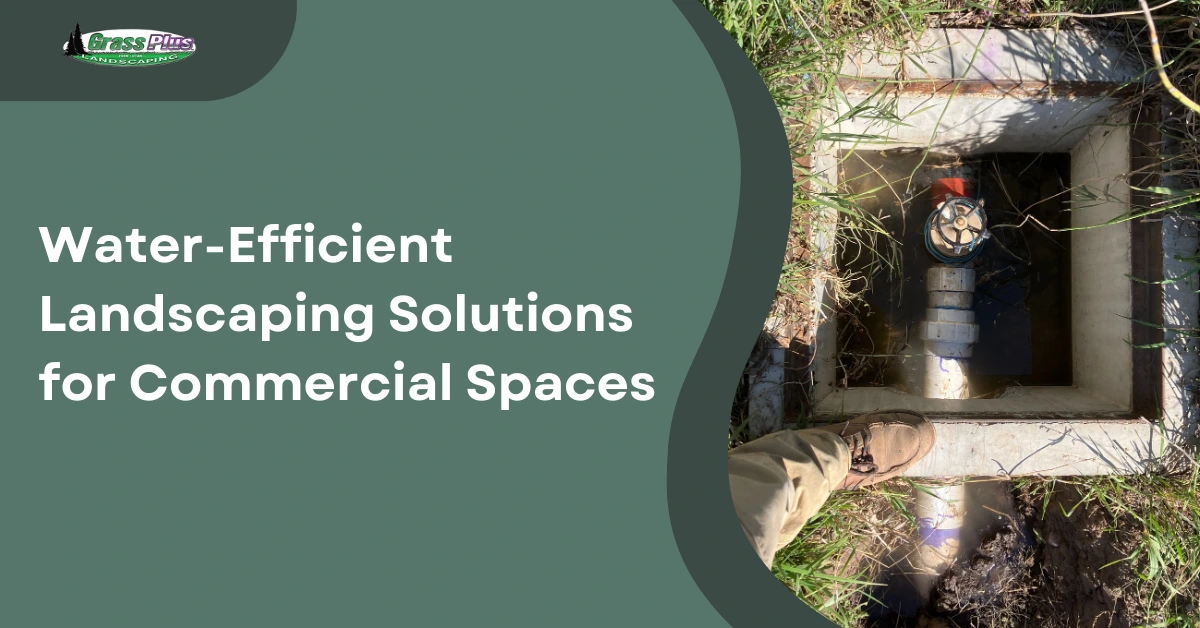When comparing hydroseeding to traditional seeding, initial material costs for hydroseeding are higher due to its specialized slurry mixture, but it guarantees even distribution and quicker germination. Traditional seeding is cheaper upfront but requires more manual labor and frequent water and fertilizer applications. Hydro-seeding employs machinery, reducing labor but increasing equipment costs. It’s more water-efficient and promotes soil stabilization, supporting sustainable practices. Long-term savings from hydroseeding include lower maintenance and water costs, making it a cost-effective choice despite the higher initial investment. For a deeper insight into which method fits your project best, explore further.

Key Takeaways
- Hydroseeding incurs higher initial material costs due to specialized slurry mixtures, while traditional seeding materials are generally less expensive.
- Hydroseeding seeds cost $5-$10 per pound, compared to $2-$8 per pound for traditional seeds.
- Hydroseeding requires less manual labor but higher equipment rental fees than traditional seeding.
- Hydroseeding provides faster germination (7-10 days) and more uniform growth compared to traditional seeding (21 days).
- Long-term savings with hydroseeding include reduced maintenance needs and efficient resource utilization, despite higher initial costs.
Initial Material Costs
When comparing initial material costs between hydroseeding and traditional methods, it’s vital to evaluate both the monetary expense and the environmental impact. In the hydroseeding vs seeding debate, hydroseeding often carries a higher initial material cost due to the specialized slurry mixture that includes seed, mulch, fertilizers, and tackifiers. This mixture guarantees rapid germination and soil erosion control, but the upfront expense can be significant.
Hydroseeding pros and cons must be carefully weighed. While hydroseeding provides a more uniform application and faster establishment, its initial materials are more expensive than traditional seeding. Traditional seeding materials, primarily seeds and basic fertilizers, are generally less costly. However, traditional methods may require additional products like straw or erosion mats, which could diminish the cost advantage.
Is hydroseeding worth it? From a sustainable practices viewpoint, hydroseeding often uses less water and provides better soil stabilization, reducing long-term environmental impact. Its ability to cover large areas quickly with less labor can mitigate some initial costs over time. Balancing initial material expense with environmental benefits, hydroseeding can be a viable option, particularly for projects prioritizing sustainability and rapid vegetation establishment.
Labor Expenses
Labor expenses play an essential role in the overall cost analysis between hydroseeding and traditional methods. When comparing hydroseeding vs seeding with traditional techniques, you’ll find that labor costs can differ markedly. Hydroseeding generally requires less manual effort because a specialized hydroseeder machine handles the mixing and spraying of the seed, mulch, and fertilizer blend. This reduces the need for a large workforce, which can save you money on labor expenses.
However, traditional seeding methods often demand more hands-on labor, including soil preparation, seed dispersal, and regular watering. This can quickly add up regarding labor hours, especially for larger projects. One of the hydroseeding pros and cons to evaluate is that while the initial labor costs might be lower, you’ll also need skilled operators to handle the hydroseeding equipment.
Is hydroseeding worth it? From a labor perspective, it often is, particularly for large-scale applications where minimizing manual labor can lead to considerable savings. Additionally, hydroseeding is a more sustainable practice, often resulting in faster germination and better erosion control, which translates into long-term labor savings in maintenance and upkeep. Therefore, understanding these labor expense dynamics is essential for making an informed decision.
Equipment Rental Fees
Equipment rental fees are another crucial factor to take into account when comparing hydroseeding to traditional seeding methods. When contemplating hydroseeding vs seeding, you’ll find that hydroseeding typically requires specialized machinery like hydro-mulchers or hydroseeders. Renting this equipment can greatly increase your costs, potentially making you question, “Is hydroseeding worth it?”
For traditional seeding, the equipment needs are relatively basic, often limited to seed spreaders and perhaps a tiller. These are generally cheaper to rent and more readily available, offering a cost-efficient solution if you’re working within a tight budget.
However, hydroseeding equipment, though more expensive, offers benefits like even distribution of seeds, mulch, and fertilizers in one pass, promoting faster germination and better coverage. This may offset the rental fees through reduced labor and material costs, not to mention the aesthetic appeal of a lush, uniform lawn.
One of the disadvantages of hydroseeding is the initial high rental cost for specialized machinery. Still, if you’re aiming for a sustainable, high-quality lawn with less manual effort, the investment can be justified. Balancing equipment rental fees with your overall project goals will help you decide the best method for your needs.
Seed Quality and Price
When comparing hydroseeding to traditional methods, you’ll find a wide range of seed variety options that can impact both cost and quality. Typically, hydroseeding can offer a more uniform application, but the cost per pound of seed may vary considerably based on your choice. Careful selection guarantees not only an aesthetically pleasing lawn but also supports sustainable growth practices.
Seed Variety Options
Although both hydroseeding and traditional seeding methods offer a wide range of seed varieties, the quality and price of these seeds can differ markedly between the two approaches. When comparing hydroseeding vs seeding, hydroseeding can incorporate a diverse mix of high-quality seeds, usually pre-treated for maximum germination and growth. This method allows for a customized approach to different soil types and climates, enhancing ecological sustainability.
Hydroseeding pros and cons often highlight the superior seed-to-soil contact, promoting quicker germination. However, the disadvantages of hydroseeding include potential higher upfront seed costs due to the specialized blends and treatments. In contrast, traditional seeding methods might offer more economical options but can lack the precision and uniformity hydroseeding provides.
From an aesthetic perspective, hydroseeding guarantees a more evenly distributed and lush appearance, ideal for large-scale landscaping projects. Additionally, the mulch used in hydroseeding acts as a protective layer, retaining moisture and reducing erosion, which is a sustainable practice. Traditional seeding might require more time and effort to achieve similar results and may involve repeated applications to fill in gaps.
Cost Per Pound
Understanding the cost per pound of seeds—both regarding quality and price—is crucial when evaluating hydroseeding versus traditional seeding methods. When considering hydroseeding, you’ll find that the cost per pound of high-quality seed can range from $5 to $10. These seeds are often blended with mulch, fertilizers, and other growth-promoting additives, potentially increasing initial costs but delivering robust growth and better soil stabilization.
In contrast, traditional seeding methods may offer a wider range of seed quality and prices, from as low as $2 to $8 per pound. Though cheaper upfront, traditional seeding usually demands additional expenses for soil preparation, fertilizer, and ongoing maintenance, which can add up over time.
When weighing hydroseeding pros and cons, consider that hydroseeding allows for even seed distribution and quicker germination, often making it a worthwhile investment despite its higher initial cost. On the flip side, traditional seeding might be more labor-intensive and less efficient but offers flexibility in seed selection and cost control.
Ultimately, is hydroseeding worth it? If you’re aiming for sustainable practices and long-term aesthetic appeal, the answer leans towards yes, especially given its efficiency in establishing a lush, green landscape.
Fertilizers and Additives
When comparing hydroseeding and traditional methods, consider how each approach handles nutrient delivery efficiency and its impact on soil health. You’ll find that hydroseeding often integrates fertilizers and additives directly into the slurry, guaranteeing an even distribution and immediate nutrient availability. On the other hand, traditional seeding might require multiple applications, potentially disrupting soil structure and sustainability.
Nutrient Delivery Efficiency
For effective nutrient delivery, hydroseeding offers a significant advantage over traditional methods, particularly in the application of fertilizers and additives. In the hydroseeding vs seeding debate, hydroseeding emerges as a more efficient method due to its ability to uniformly distribute nutrients through a slurry mix. This mix not only includes seeds but also incorporates vital fertilizers and soil conditioners, guaranteeing that nutrients are readily available to the developing plants.
One of the key hydroseeding pros is its capacity for immediate nutrient application. Traditional seeding methods often require separate steps for fertilization, potentially leading to uneven nutrient distribution and wastage. However, a disadvantage of hydroseeding is its dependency on specialized equipment and the need for precise preparation, which may increase upfront costs. Nonetheless, the long-term benefits, such as improved growth rates and better plant health, often outweigh these initial disadvantages.
The cons of hydroseeding are balanced by its sustainable practice, as it reduces the need for multiple applications of fertilizers and additives, thereby minimizing environmental impact. By integrating nutrient delivery into a single process, you not only save time but also promote a healthier, more aesthetically pleasing landscape.
Soil Health Impact
While nutrient delivery efficiency is a clear strength of hydroseeding, its impact on soil health, particularly through the use of fertilizers and additives, is another vital factor. Hydroseeding often involves the application of a slurry mix that includes various fertilizers and soil conditioners. This can provide immediate nutrient availability to seedlings, which is a significant advantage. However, the continual use of synthetic fertilizers can lead to long-term soil degradation and reduced microbial activity, highlighting one of the key disadvantages of hydroseeding.
When comparing hydroseeding vs seeding, traditional methods often allow for more organic approaches. For instance, incorporating compost or organic fertilizers during traditional seeding can enrich the soil over time, promoting sustainable soil health. On the other hand, hydroseeding’s reliance on synthetic additives can sometimes overshadow its initial benefits.
In the context of hydroseeding pros and cons, another factor to take into account is the potential for chemical runoff, which may affect surrounding ecosystems. Sustainable practices in hydroseeding, such as using organic fertilizers and beneficial soil microbes, can mitigate some negative impacts. Ultimately, balancing immediate aesthetic goals with long-term soil health is fundamental for making an informed decision.
Water Usage Costs
Water usage costs play an important role in the overall expenses associated with both hydroseeding and traditional seeding methods. When comparing hydroseeding vs seeding, it’s vital to examine how each method impacts water consumption and, consequently, your budget.
Hydroseeding typically requires less water than traditional seeding due to its efficient application process. The slurry mixture used in hydroseeding contains water, seed, mulch, and fertilizer, which helps retain moisture in the soil. This leads to a more consistent germination process and reduces the frequency of additional watering. However, one of the disadvantages of hydroseeding is the initial cost of the slurry mixture, which can be higher than the seeds and materials used in traditional methods.
From a sustainable practices standpoint, hydroseeding’s water efficiency can be a significant advantage. By conserving water, you’re not only cutting costs but also promoting an eco-friendly approach to landscaping. Nonetheless, it’s important to weigh the hydroseeding pros and cons, as the upfront investment might offset the long-term water savings.
In contrast, traditional seeding often demands more frequent watering, especially during the initial growth phase, leading to potentially higher water usage costs. Balancing these factors is key to making an informed decision.
Maintenance and Aftercare
Considering water usage costs, the next aspect to evaluate is maintenance and aftercare for both hydroseeding and traditional seeding methods. When it comes to hydroseeding vs seeding, each method has unique requirements that influence both time and long-term sustainability.
Hydroseeding has the advantage of faster germination and initial growth, which means less initial maintenance. Its mulch layer retains moisture, reducing the need for frequent watering. However, one of the disadvantages of hydroseeding is its susceptibility to erosion if not properly cared for, necessitating diligent monitoring in the early stages.
Traditional seeding, on the other hand, requires more frequent watering initially, contributing to higher water usage costs. Weed control is also a more significant issue, demanding consistent monitoring and potential herbicide application. This method may result in a longer establishment period, requiring ongoing care and resources.
In terms of sustainable practices, hydroseeding uses a slurry mix that can include organic materials, promoting soil health. Yet, the potential need for erosion control measures can be a drawback. Traditional seeding, although labor-intensive, allows for more straightforward management of soil amendments and organic treatments.
Ultimately, your choice between hydroseeding vs seeding should align with your long-term maintenance capacity and environmental goals.
Growth Time and Efficiency
When evaluating the growth time and efficiency of hydroseeding and traditional seeding, it’s important to reflect on the specific advantages each method offers. Hydroseeding utilizes a slurry of seed, mulch, and nutrients, which greatly accelerates the germination process. In contrast, traditional seeding relies on manually distributing seeds, often resulting in slower and less uniform growth.
Key Points to Reflect On:
- Speed of Germination: Hydroseeding typically shows results within 7-10 days, while traditional seeding can take up to 21 days to germinate. This rapid growth is vital for erosion control and establishing a dense, healthy lawn quickly.
- Efficiency: The hydroseeding process guarantees an even distribution of seeds, mulch, and fertilizer, leading to more uniform growth. Traditional seeding often results in patchy areas, requiring additional maintenance and reseeding.
- Resource Utilization: Hydroseeding is more resource-efficient, utilizing water and nutrients more effectively due to the slurry mixture. This reduces the need for excessive watering and fertilizing, aligning with sustainable practices.
Long-term Savings Potential
Investing in hydroseeding can yield substantial long-term savings due to its efficient resource utilization and reduced maintenance needs. When evaluating hydroseeding vs seeding, the initial costs might seem higher for hydroseeding. However, the long-term benefits outweigh the upfront investment. Hydroseeding guarantees even distribution of seeds, mulch, and fertilizer, which minimizes wastage and promotes uniform growth. This leads to fewer reseeding efforts and less need for additional fertilizers over time.
Is hydroseeding worth it? Absolutely. Its ability to establish a robust root system quickly means your lawn or landscape will need less water and fewer interventions for weed control. The mulch layer in hydroseeding also helps retain moisture, reducing the frequency of irrigation and lowering your water bills. In addition, the healthier and denser grass it produces is more resilient to pests and diseases, further cutting down on maintenance costs.
Considering the hydroseeding pros and cons, the long-term savings potential is a significant advantage. While traditional seeding may appear less expensive initially, the ongoing costs related to watering, fertilizing, and pest control often escalate. Hydroseeding’s sustainable practices make it a cost-effective choice for the future.
Conclusion
In your quest for the greenest lawn, consider hydroseeding as your Excalibur. While traditional methods may seem like the reliable old steed, hydroseeding’s lower labor expenses, efficient water usage, and superior seed quality make it the Merlin of modern landscaping. You might spend more upfront, but the long-term savings and sustainable practices will enchant not just your wallet, but the environment too. Choose wisely, and let your lawn be the round table of your domain.





